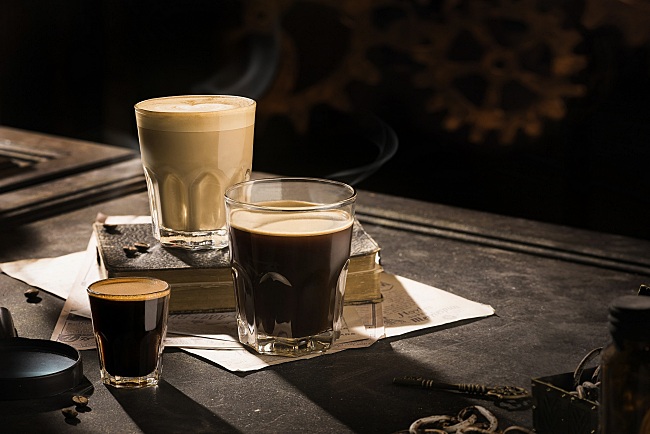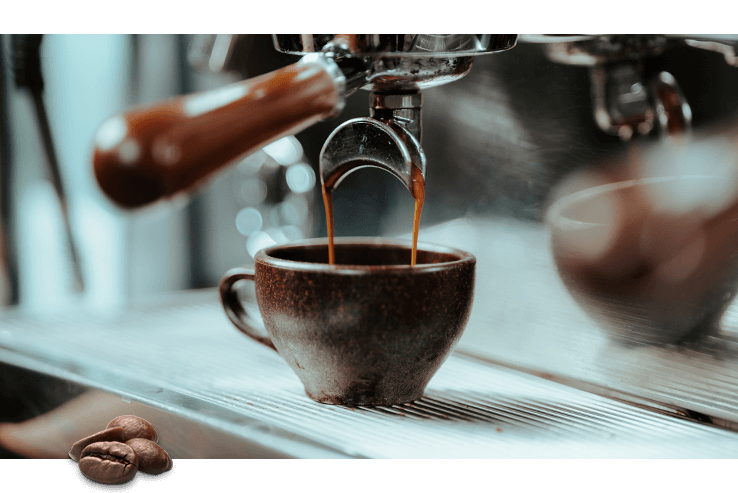Discovering the Rich Tastes of Coffee Beans: a Deep Dive Into Espresso and Blended Coffee Beans
When you check out the abundant tastes of coffee beans, you discover a complicated globe where each range brings its own character to your cup. As you navigate through the art of coffee and the creativity behind blended coffees, you'll start to value the nuances that make each sip one-of-a-kind.
The Origins of Coffee Beans: Exploring Terroir and Taste Profiles
When you take a sip of coffee, you're not just appreciating a drink; you're experiencing a rich tapestry of flavors shaped by the beans' beginnings. Each region produces one-of-a-kind flavor accounts affected by climate, dirt, and altitude. For instance, beans from Ethiopia frequently rupture with brilliant, fruity notes, while those from Colombia tend to offer a balanced, nutty sweetness.
As you check out different origins, you'll see how terroir-- the ecological aspects affecting a crop-- plays a vital function - Single Origin Espresso. The exact same coffee selection can taste significantly various relying on where it's grown
When you think about these factors, you begin to value the intricacy behind your mug. Each sip tells a story of the land and the farmers who supported the beans. Following time you indulge, believe concerning the journey your coffee took prior to it reached your hands, and appreciate those complex tastes that reflect its origin.
Comprehending Espresso: The Art and Scientific Research Behind the Mixture
When you consider coffee, it's not just concerning the strong taste; it's also regarding the techniques that bring it to life. Comprehending how different prep work approaches impact preference can change your developing experience. Allow's explore the complexities of coffee preparation and reveal the unique taste accounts that make each cup unique.
Coffee Prep Work Techniques
Espresso prep work is both a science and an art, integrating accurate strategies with a deep understanding of coffee. To begin, you'll intend to choose premium, newly roasted beans and grind them finely for excellent extraction (Single Origin Espresso). The grind dimension is important; as well crude, and your coffee will be weak, also fine, and it'll be bitter
Next, tamp the grounds equally in the portafilter to assure consistent removal. When you secure it into the machine, go for a brewing temperature level between 190 ° F and 205 °
F.As you pull the shot, look for the ideal extraction time-- around 25-30 secs. The outcome must be a rich, luscious espresso with an attractive layer of crema on top. With technique, you'll master these techniques.
Flavor Accounts Discussed
The world of coffee provides an abundant tapestry of taste accounts that can raise your coffee experience. Light roasts commonly display bright acidity and vibrant flavors, while dark roasts present much deeper, bolder tones.
A well-crafted mix may integrate the intense notes of an Ethiopian bean with the rich, chocolatey touches of a Brazilian bean. Welcome the journey of discovering coffee's varied flavors, and you'll transform your coffee routine right into an amazing adventure.
Handling Techniques: How They Influence Taste and Fragrance
While it might seem that the beginning of coffee beans is one of the most significant consider establishing their taste and aroma, the handling techniques used post-harvest play a similarly necessary duty. You'll locate that these methods can significantly alter the final preference account of your cup.
For circumstances, the washed process removes the fruit from the beans before fermentation, typically leading to a cleaner, brighter taste. The all-natural process leaves the fruit intact during drying, resulting in a sweeter, fruitier profile.
Various other techniques, like honey processing, strike a balance, enabling some fruit mucilage to remain, offering a distinct complexity.
Each processing strategy connects with the beans' inherent features, boosting or muting specific tastes and fragrances. When you sip that coffee or blended coffee, remember that the trip from cherry to mug is affected not just by beginning however additionally by exactly how those beans were refined.
Roasting Methods: Unlocking the Full Potential of Coffee Beans
Roasting methods are crucial for disclosing the full capacity of coffee beans, as they change raw, eco-friendly beans into the aromatic, tasty coffee you enjoy. The option of toasting method-- light, medium, or dark-- dramatically Single Origin Espresso influences flavor profiles. Light roasts preserve the beans' natural acidity and fruity notes, while tool roasts equilibrium sweet taste and richness. Dark roasts, on the other hand, emphasize vibrant, smoky tastes.
A slower roast at lower temperature levels allows for complex tastes to develop, while a quicker roast can increase bitterness. By mastering these strategies, you'll expose a world of flavor, elevating your coffee experience to brand-new elevations.
The Magic of Blended Coffee: Producing Distinct Flavor Experiences
Producing an one-of-a-kind flavor experience with mixed coffee can change your early morning ritual right into an exploration of preference. By integrating various beans from different regions, you can reveal a symphony of flavors that boost your mug to new elevations. Each blend offers an unique account, balancing acidity, sweet taste, and body to produce something absolutely unique.
When you pick a blend, you're not just choosing a coffee; you're choosing a journey across varied landscapes and societies. Explore different mixes enables you to discover your personal favorites, whether you appreciate fruity notes or abundant, chocolatey undertones.

Tasting Notes: Identifying the Nuances in Your Mug
As you sip your coffee, you could notice a spectrum of tastes dancing on your taste buds, each revealing the intricacies of the beans. You might taste the intense acidity similar to citrus or the deep, abundant notes similar to dark chocolate. The sweetness might stimulate honey or sugar, stabilizing the total account perfectly.
Take note of the body of the coffee-- does it feel airy and light, or is it complete and velvety? The coating, too, supplies hints; a remaining aftertaste might mean nuttiness or floral undertones.

Don't fail to remember to check out the one-of-a-kind qualities of various origins, as each area imparts unique tastes - Single Origin Espresso. For example, Ethiopian coffees often present fruity notes, while Colombian beans may display a much more rounded sweet taste. By identifying these nuances, you'll grow your appreciation for each mug, raising your coffee experience to brand-new heights

Developing Approaches: Optimizing Taste Removal for each Bean
When you check out the various brewing approaches, you'll discover that each strategy can considerably influence the taste account of your coffee. From French press to pour-over, each approach essences various substances, enhancing or muting specific notes. Using a French press permits oils to stay in the brew, developing a richer taste, while pour-over highlights quality and brightness.
Temperature level and grind size also play crucial duties. A coarser work works best for cool mixtures, while a fine work is perfect for espresso. Exploring with water temperature-- between 195 ° F and 205 ° F-- can disclose surprise tastes, as well.
Do not forget about soaking time; a fast removal can bring about sour notes, while over-extraction might generate resentment. By adjusting these variables, you can maximize flavor removal and absolutely raise your coffee experience. Delight in the trip of discovering what approach finest matches your palate!
Frequently Asked Questions
What Is the Ideal Water Temperature Level for Brewing Coffee?
The excellent water temperature level for developing coffee's in between 195 ° F and 205 ° F. If you make use of water that's too hot, you'll over-extract flavors; too cold, and you won't extract sufficient. Go for that pleasant spot for the very best brew!
Just How Does Grind Size Influence Coffee Flavor?
Grind dimension significantly influences coffee taste. Better grinds essence much more tastes and oils, resulting in a bolder taste, while coarser grinds yield a lighter flavor. Adjusting work dimension assists you accomplish your desired coffee account.
Exist Wellness Perks Linked With Alcohol Consumption Coffee?

What Is the Distinction Between Arabica and Robusta Beans?
Arabica beans are smoother and sweeter, usually featuring fruity tastes, while robusta beans are more powerful with a bitter preference and higher caffeine web content. You'll see these distinctions in scent and brewing experience.
Just How Can I Store Coffee Beans for Freshness?
To keep coffee beans for freshness, maintain them in an impermeable container, far from moisture, warm, and light. You'll preserve their taste much longer if you just grind what you require right prior to brewing.
Discovering the Rich Flavors of Coffee Beans: a Deep Dive Into Espresso and Blended Coffee Beans.
When you explore the abundant tastes of coffee beans, you uncover a complicated world where each selection brings its own personality to your cup.When you take a sip of coffee, you're not just delighting in a drink; you're experiencing a rich tapestry of tastes shaped by the beans' origins.Roasting methods are essential for exposing the complete potential of coffee beans, as they transform raw, green beans into the fragrant, delicious coffee you enjoy.As you drink your coffee, you might observe a range of flavors dancing on your palate, each revealing the intricacies of the beans.